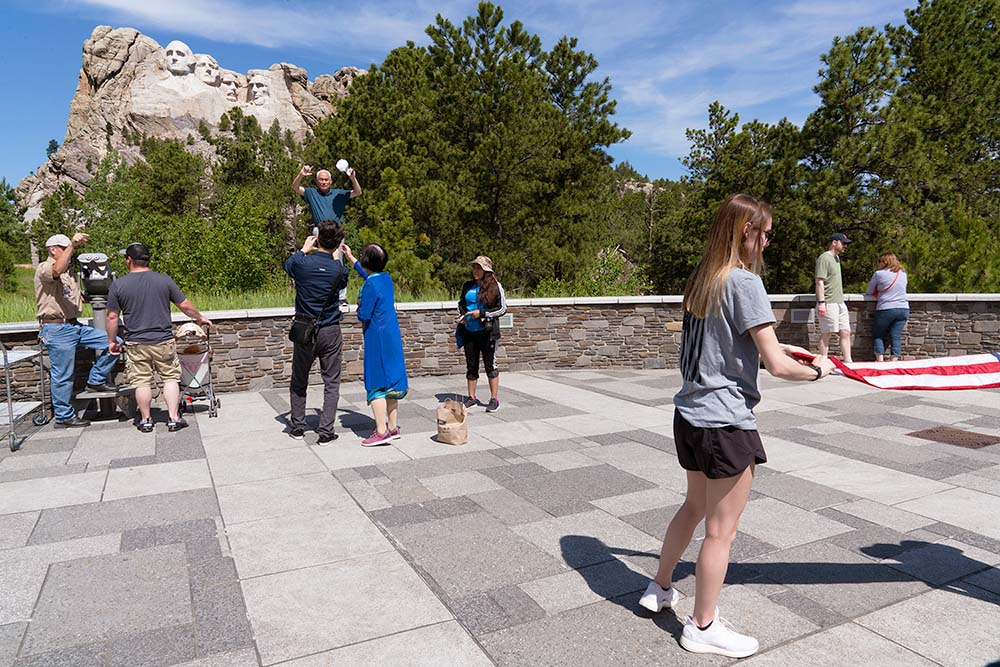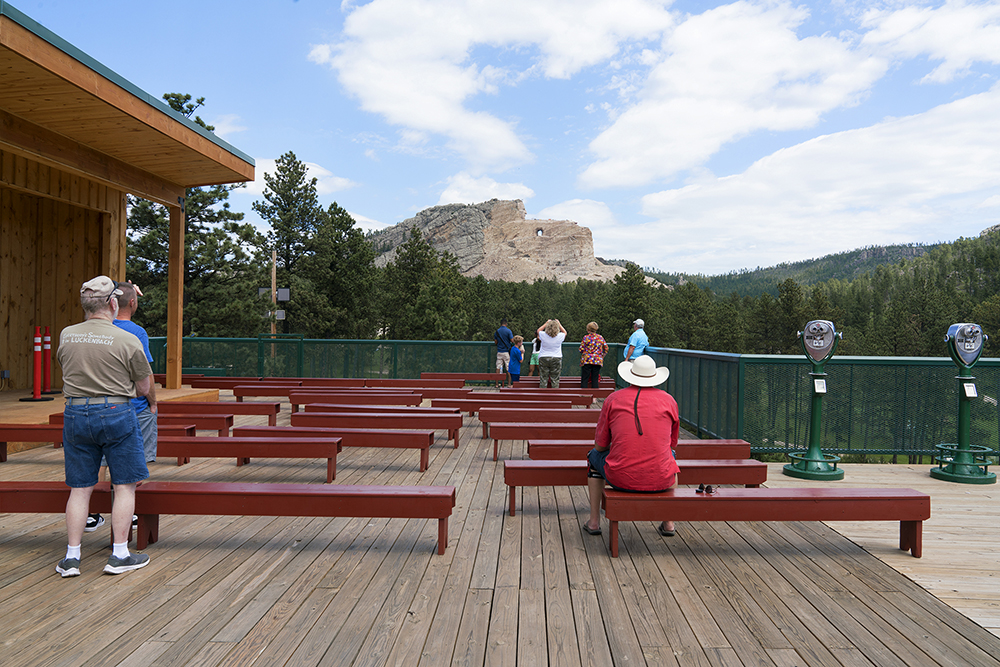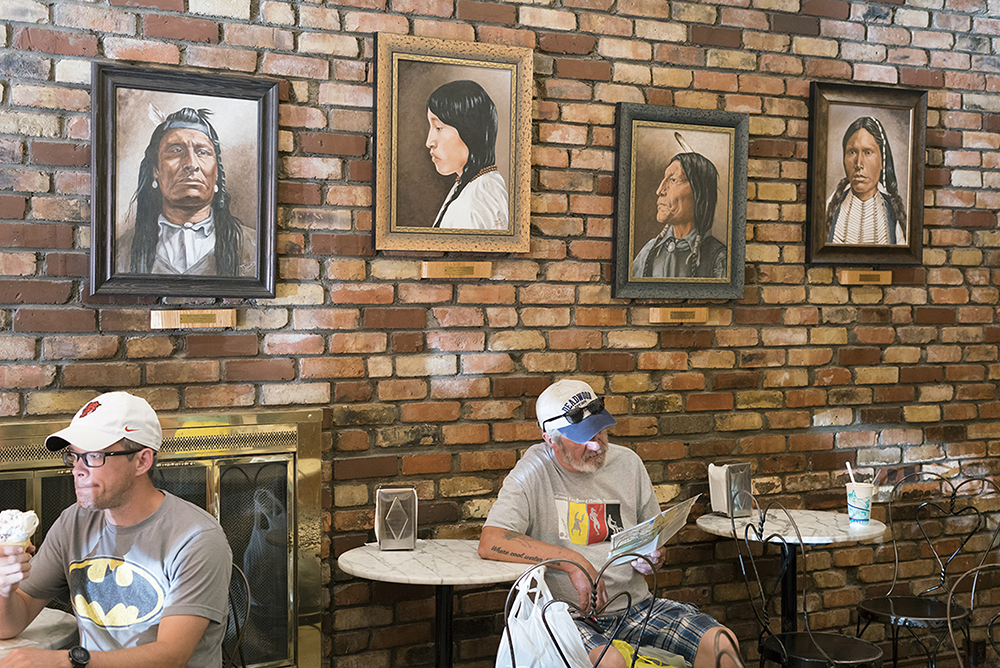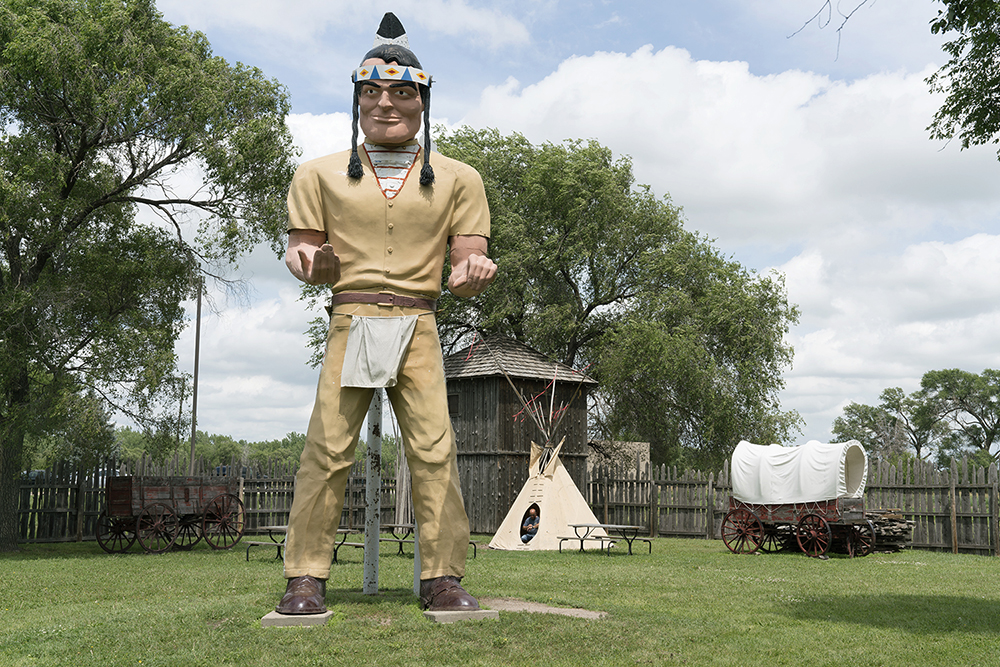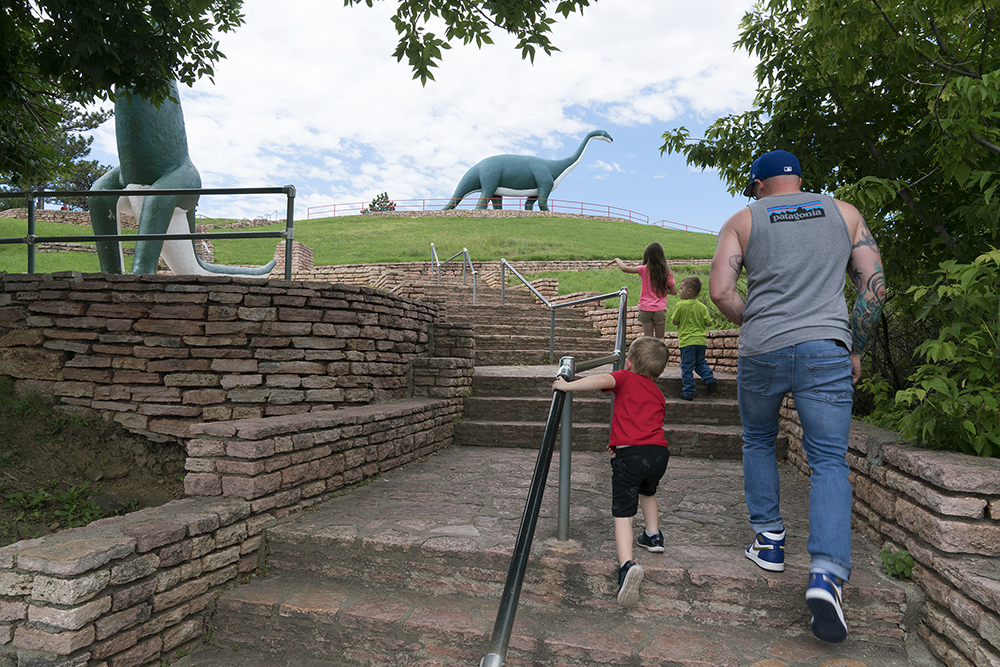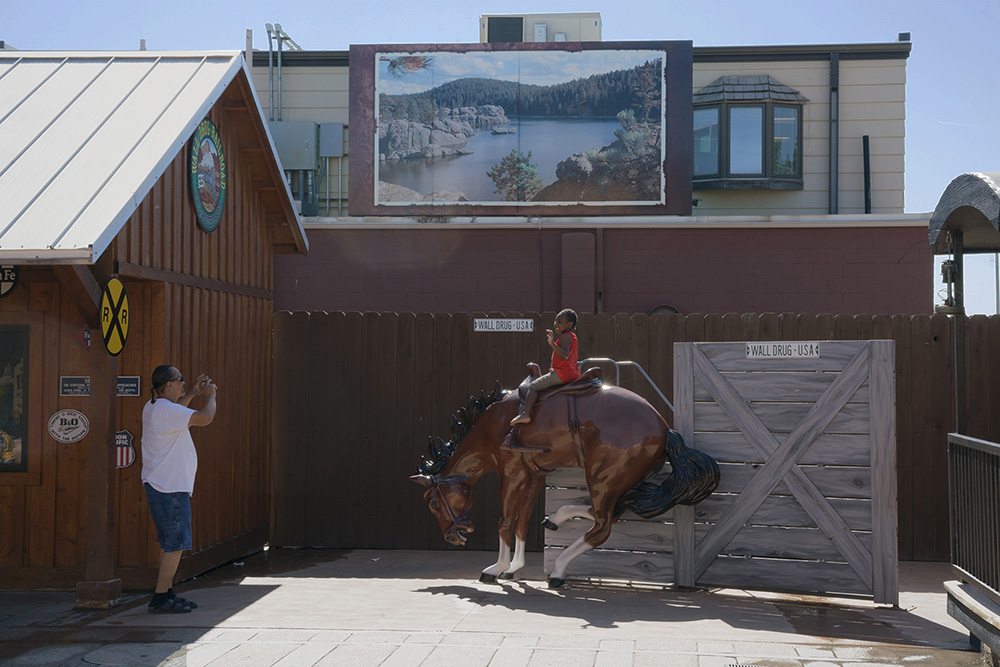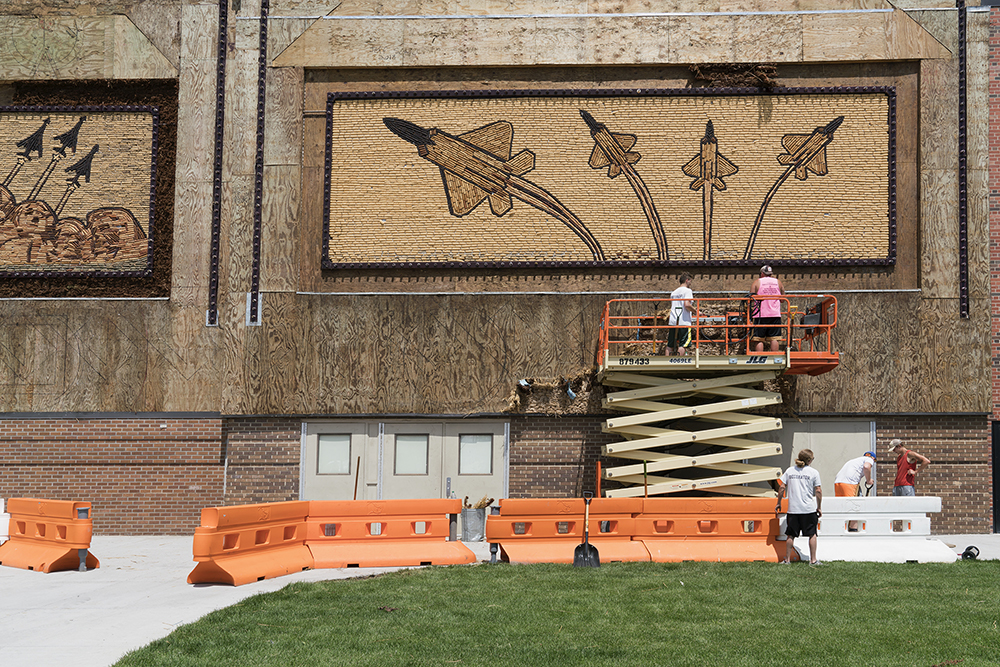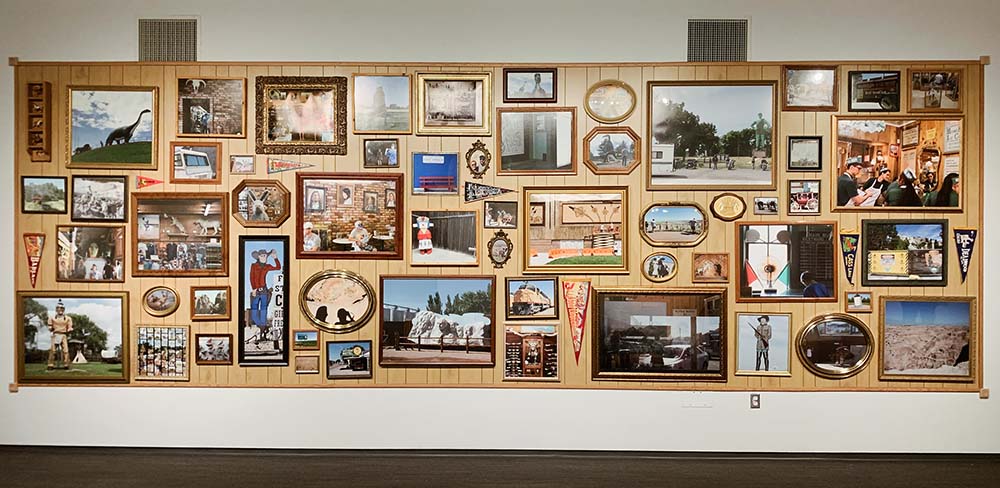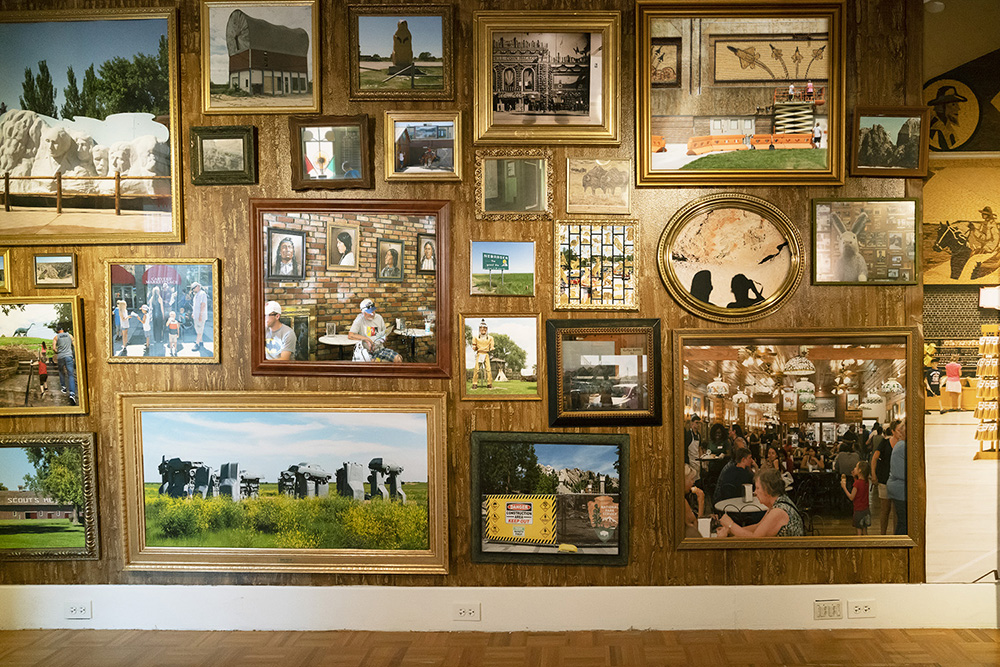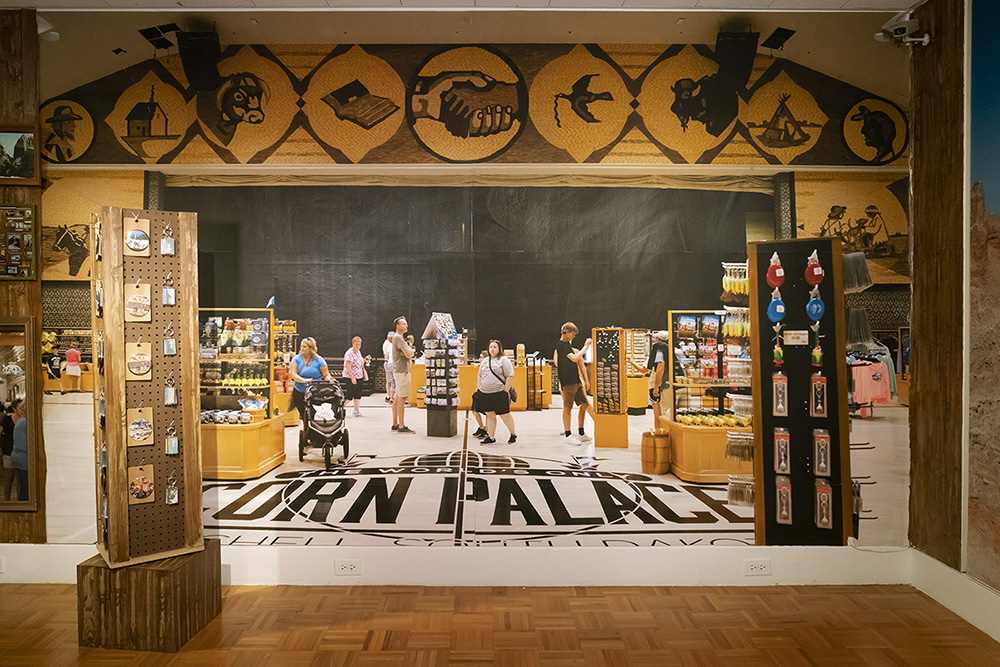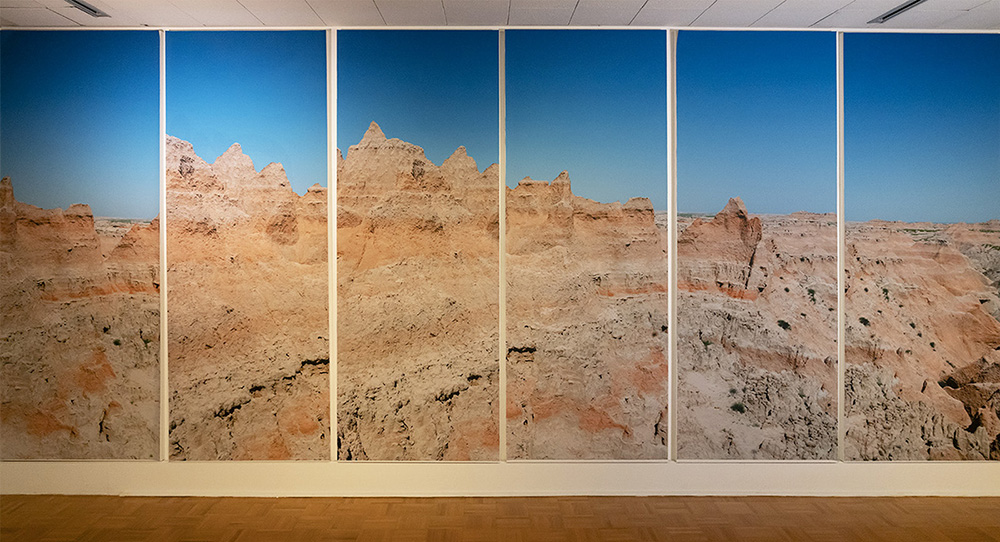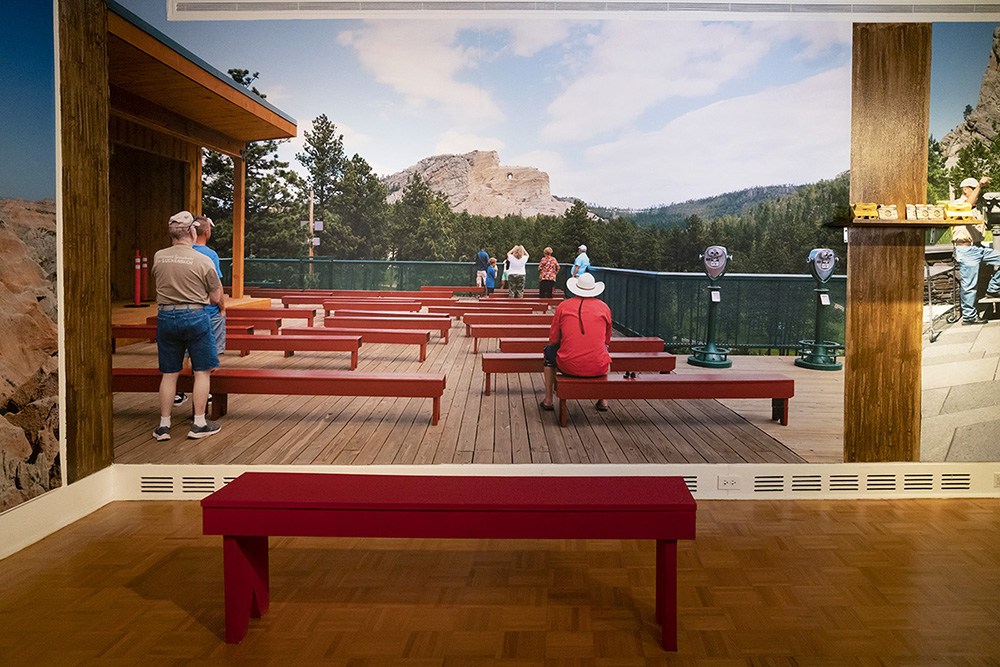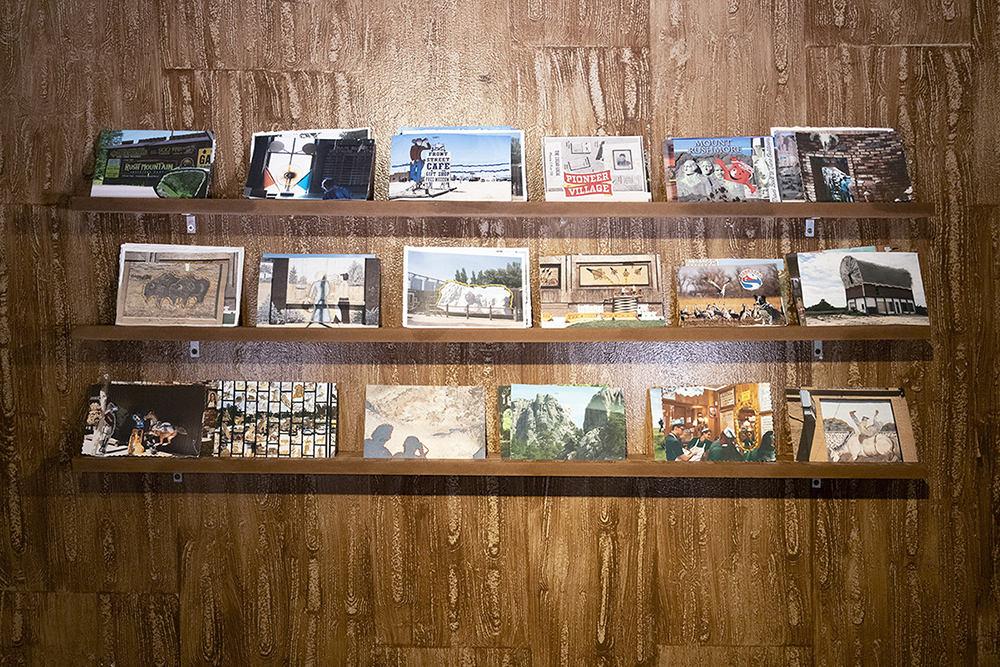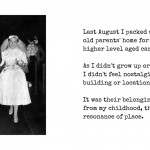Epiphany Knedler: Wish You Were Here
I can’t remember where I first came across the work of Epiphany Knedler, but I was so knocked out by the installation of her MFA show that it was hard to forget. She created an immersive space that forced us to reconsider the selling of the West, romanticized, commodified, and sanitized for happy family outings. As Smithsonian writer Stephen Aron states, “Dismantling cherished fables about the Old West and stripping the romance from the history of “Westward Ho,” newer studies have exhumed the human casualties and environmental costs of American expansion. Offering little glory, these interpretations of how the West was lost have accented the savagery of American civilization.” With all American history, it’s critical to acknowledge the truth. An interview with the artist follows.
Epiphany Knedler is an archiver of American life. As a lifelong Midwesterner, she uses images and mixed-media installation to explore social, political, and personal histories. She is inspired by the aesthetics and geopolitical landscapes of South Dakota, surveying the storied past of bold exploration and quiet melancholy. She graduated from the University of South Dakota in 2017 with a BFA in Studio Art and a BA in Political Science. She completed her MFA in Studio Art with an emphasis in Photography at East Carolina University in 2020. She is currently based in Sioux Falls, South Dakota serving as an online Adjunct Instructor across the nation. She has recently been selected as a Photolucida Critical Mass Finalist. Her work has recently been exhibited with the North Carolina Museum of Art, CAM Raleigh, and Lenscratch. She is the co-owner of Midwest Nice Art with her partner and collaborator, Tim Rickett. Follow Epiphany on Instagram:@epiphanysk
Wish You Were Here
The Great Plains of the Midwest are known for their prairie fields and pioneer history, along with a landscape uninterrupted for miles. Although referred to as flyover country, this region is full of tourist destinations for the road-trippers making their way out West. Wish You Were Here examines the ways the Great Plains region is romanticized using legends, folklore, and histories. This history is often commodified through roadside attractions where tourists participate in rituals, like photo-ops or buying souvenirs, as experience and inclusion in these histories. The nostalgia of these rituals often clouds tourist perspectives, creating complicity in continuing flawed narratives. While the legends of the Great Plains are rooted in truth, from the infamous Buffalo Bill’s Wild West Show to the spirits of the Badlands, the stories grow to overshadow some grim truths of Midwestern history. These stories become a sense of pride and comfort for the local population, who use iconography to perpetuate colonial ideals such as manifest destiny and the Wild West. These ideologies shape historic and contemporary narratives. The images in this series reveal the reality of tourist interactions in roadside attractions rather than the typical picturesque postcards. The images highlight aspects of truth within the idyll, including concealed histories, tourist engagement, surrounding infrastructure, and pastoral nature. Images have the power to inform our histories and it is our responsibility to find the truth amongst the myths. Today’s contentious social and political environment is a product of the perpetuation of these myths. With awareness of this history, the authenticity of these spaces as well as their interpretations is put into question. We are able to bring awareness to overlooked narratives and respond to them through our actions and revisions.
Congratulations on your Wish You Were Here Project and it’s remarkable installation. Let’s start at the beginning–can you describe the landscape of your growing up and what brought you to photography?
Thank you so much! I grew up in a very creative environment where both of my parents are artists. I always enjoyed things like drawing and painting, but when I was in high school I found a love for trying to capture the world around me. I remember borrowing my sister’s digital camera while I was in high school and trying to see my small-town of Vermillion, South Dakota in new ways through the lens of a camera. It’s a typical Midwestern small University town with a lot of educators and farmers surrounded by miles and miles of rural farmland. I never really thought about pursuing photography as an art until my father surprised me by bringing home large 20×30 inch prints of some of my photographs. I began taking photography in college as a freshman at the George Washington University as a personal interpretation of my homesickness and exploring the new world around me. I continue to interpret complex emotions and environments through my camera.
How did the project come about?
While I was at East Carolina University working towards my MFA, I had originally started an exploration of the local environment and social movements. There was a lot of “revitalization” going on and I was trying to understand the local community’s perspective on it. Being in the South for the first time, I was in the belly of the continued racial and economic inequality. As an outsider to the Greenville community, I really reflected on who I am and what my place was in the art world. I realized I did not want to perpetuate any kind of white savior complex so I took a step back from that project. Understanding who I am and what kind of images I enjoy making allowed me to see my home in a new light. I really studied what South Dakota and the Midwest look like to outsiders, and came to the importance of the way we tell our personal and local histories. That paired with the idea of not wanting to tell stories for others sparked Wish You Were Here.
I’ve been thinking about the commodification of landscape, particularly in our National Parks. For me, growing up in the West, that search for a romanticized version of place was a big part of my childhood road trips. Was it the same for you?
Yes, most definitely. Being on the East River side of South Dakota, filled with flat farmland and strip malls, I always loved exploring the more picturesque areas of the West, the Badlands, the Sandhills, the forests… Even our National Parks have become commodified, where there are specific lookout points or views that tourists always gather around. If you look through any of my images, none of them are the romanticized versions of place; there is constantly new construction, advertisements, security fences all hidden in the backgrounds. I’ve come to understand that any place can be beautiful or at least appreciated, but it all depends on how we look at it – the new is always interesting!
Who and what were your inspirations for the project?
I’d say first and foremost my inspiration for this is everyone’s Midwest Grandma’s house! I absolutely love the kitsch of Midwestern aesthetics – the woodpaneling in the basement, the tchotchkes on the shelves, the homemade afghans and family portraits. I love it! Aside from that inspiration for my installation, I love the exploration of historical participation of Greta Pratt’s Using History, human interaction with the environment in Alexis Pike’s Claimed: Landscape, the hidden stories of formal images in Joel Sternfeld’s On This Site, and the interdisciplinary exploration of history in Wendy Red Star’s work.
Can you talk about the amazing installation of your project…
Thank you so much for the kind words! There are a few layers to this project, where I am playing with the role of the photograph and the commodified roadside attraction. If you’ve ever been to Wall Drug, South Dakota (or seen Nomadland!) you’ll recognize my main inspiration. Part Grandma’s house, idealized Western aesthetics, and kitsch gift shop, it’s a pseudo-roadside attraction. I didn’t want to play into the traditional white cube because Wall Drug is essentially the antithesis to it.
I wanted to create a series that is fun to look at initially but reveals darker truths, just like the legends we share through the years. I’ve been experimenting with the way we can create a false reality through the size and shape of photographs. The images take the form of large vinyl wall prints that create an environmental illusion, framed prints that overwhelm the wall, postcards, viewfinders, and other souvenirs. The viewer participates in the space with an awareness for the way legends and attractions reinforce colonial ideas. The viewer comes to the space with nostalgia, usually reminiscing on their own roadtrips as a child, but with a secondary perception to question the ways our histories and ideals perpetuate flawed narratives.
Congratulations on your MFA too! What are the challenges for recent MFA grads? I see you are an Adjunct Instructor at four different colleges–that’s a lot to navigate.
Thank you! – graduating during the pandemic was an extremely difficult road to navigate. Recent MFA grads have a duality of opportunities and difficulties in the world today. Many of us have the skills for online teaching and the digital era is giving us opportunities to teach at institutions across the country or create connections through art groups, Instagram, and zines. Unfortunately, it’s more difficult to find in-person teaching positions which are already extremely competitive. I was very lucky to find online teaching adjunct positions right out of grad school and have been juggling a lot to keep up with them and make work. Since they’re online, it’s a tad bit easier since there’s no commute! My goal this next semester is to find time to work on my art practice more each week.
What’s next for you?
I’ve been very inspired by Wish You Were Here and do not feel finished with the research into stories. There are so many legends rooted in some form of truth that people just aren’t aware of! My partner, Tim Rickett, is a sculptor by trade also from the Midwest. We’ve been working on a new project influenced by the stories we don’t hear about our histories. We’re combining our mediums with photography, sculpture, bricologe, found objects, and collage to recreate some of these stories in our series Lost Legends. We received a South Dakota Artist Collaboration Grant for FY2022 and will exhibit the work in the John A. Day Gallery on the University of South Dakota campus. If you know of any local Midwest stories that should be shared, please let me know!
Along with that, I’m continuing work with my personal history through embroidery and photography as well as exploring the connections between inequalities and local environments. I’m so excited to continue sharing and interpreting local histories!
Installation Photographs
Posts on Lenscratch may not be reproduced without the permission of the Lenscratch staff and the photographer.
Recommended
-
Earth Month Photographers on Photographers: Tyler Green in Conversation with Megan JacobsApril 15th, 2024
-
Shari Yantra Marcacci: All My Heart is in EclipseApril 14th, 2024
-
Artists of Türkiye: Cansu YildiranMarch 29th, 2024
-
Broad Strokes III: Joan Haseltine: The Girl Who Escaped and Other StoriesMarch 9th, 2024
-
Brandon Tauszik: Fifteen VaultsMarch 3rd, 2024

